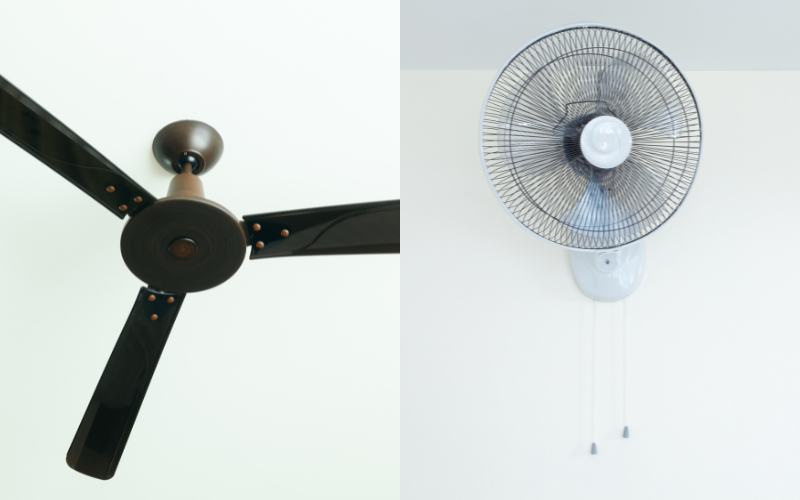When it comes to staying cool, the choice between wall fans and ceiling fans can leave you in a whirlwind of options. Each type has its perks, and your decision depends on your needs and the space you’re working with. To make the choice easier, let’s dive into the specifics while looking at some top brands like the Acorn ceiling fan, Fanztec ceiling fan, Samaire fan, and Bestar fan.
The Ceiling Fan: A Classic for a Reason
Ceiling fans have long been a staple in homes and offices, and for good reason. They provide consistent airflow throughout a room, making them ideal for spaces where people gather or spend long periods. The Acorn ceiling fan, for example, is a popular choice due to its reliable performance and sleek design. Its versatility makes it suitable for bedrooms, living rooms, and even dining areas.
One advantage of ceiling fans is their ability to cover a wide area. The Fanztec ceiling fan, with its efficient motor and well-designed blades, ensures optimal airflow across larger spaces. Ceiling fans are also less obtrusive compared to wall fans, as they remain out of the way and seamlessly blend with your decor. This makes them a great option for rooms with sufficient ceiling height.
However, ceiling fans require a bit more effort to install. You’ll need proper wiring and a sturdy mounting point, especially for heavier models like the Bestar fan. But once installed, these fans deliver excellent performance with minimal maintenance.
The Wall Fan: Compact and Focused
Wall fans offer a different kind of cooling experience. Mounted on walls, they save floor and ceiling space, making them ideal for smaller rooms or areas with limited overhead clearance. The Samaire fan is a fantastic example of a wall fan that combines efficiency with a compact design. It’s perfect for kitchens, workshops, or narrow hallways where ceiling fans might not fit.
Wall fans excel at providing focused airflow. Unlike ceiling fans, which distribute air evenly, wall fans can be angled to cool specific areas. This makes them a practical choice for situations where you need targeted cooling—like keeping a workstation comfortable during a hot day. The Bestar fan also offers wall-mounted options with adjustable features, giving you more control over airflow direction.
On the downside, wall fans can be noisier than ceiling fans, especially at higher speeds. Installation is generally easier but requires you to ensure the fan is securely mounted to avoid vibrations or noise issues.
Comparing Airflow and Efficiency
The primary function of any fan is to keep you cool, so airflow efficiency is key. Ceiling fans like the Fanztec ceiling fan are designed to circulate air across larger areas, making them better suited for spacious rooms. With high airflow capacities, these fans provide a consistent breeze that keeps everyone in the room comfortable.
Wall fans, on the other hand, focus on a more concentrated airflow. This makes them efficient for cooling specific spots but less effective for whole-room circulation. The Samaire fan stands out for its ability to deliver powerful airflow in compact spaces, ensuring you stay cool even in tight corners.
Both types of fans have their strengths in terms of energy efficiency. Ceiling fans tend to be more energy-efficient for long-term use, especially models like the Acorn ceiling fan, which include energy-saving features like DC motors. Wall fans are also energy-efficient but might consume slightly more power at higher settings due to their focused operation.
Aesthetic and Space Considerations
Ceiling fans are often seen as a design element, with brands like the Bestar fan offering stylish models that complement various interiors. From minimalist designs to intricate finishes, ceiling fans can enhance the look of a room while providing functionality. Wall fans, by contrast, are more utilitarian in appearance. While some models, such as the Samaire fan, have modern designs, they’re generally chosen for practicality over style.
If you’re working with a smaller space, wall fans might be the better option as they don’t require overhead clearance. In larger rooms, ceiling fans like the Fanztec ceiling fan or Acorn ceiling fan make more sense, offering a balanced mix of aesthetics and performance without encroaching on wall space.
Maintenance and Longevity
Both wall fans and ceiling fans require regular maintenance to keep them running smoothly. Ceiling fans, such as the Acorn ceiling fan, typically need occasional blade cleaning and motor checks. Wall fans, like the Samaire fan, may require more frequent cleaning due to their proximity to walls, where dust tends to accumulate.
In terms of durability, both types can last for years if properly maintained. Brands like Fanztec ceiling fan and Bestar fan are known for their high-quality construction, ensuring long-term performance.
Choosing the Right Fan for Your Needs
Ultimately, the choice between wall fans and ceiling fans depends on your specific requirements. For larger spaces or areas where aesthetics matter, ceiling fans like the Acorn ceiling fan or Fanztec ceiling fan are excellent options. They offer widespread airflow and energy efficiency while adding a touch of style to your space.
If you’re dealing with tight spaces or need targeted cooling, wall fans like the Samaire fan provide a practical solution. They’re easy to install, space-saving, and effective for focused airflow. The Bestar fan offers both ceiling and wall-mounted options, giving you the flexibility to choose based on your room’s layout.
Ready to make the cool choice? Visit Sense N Bedeck to browse a wide range of ceiling and wall fans, including top models from trusted brands. Stay breezy and choose the fan that suits your needs perfectly.
